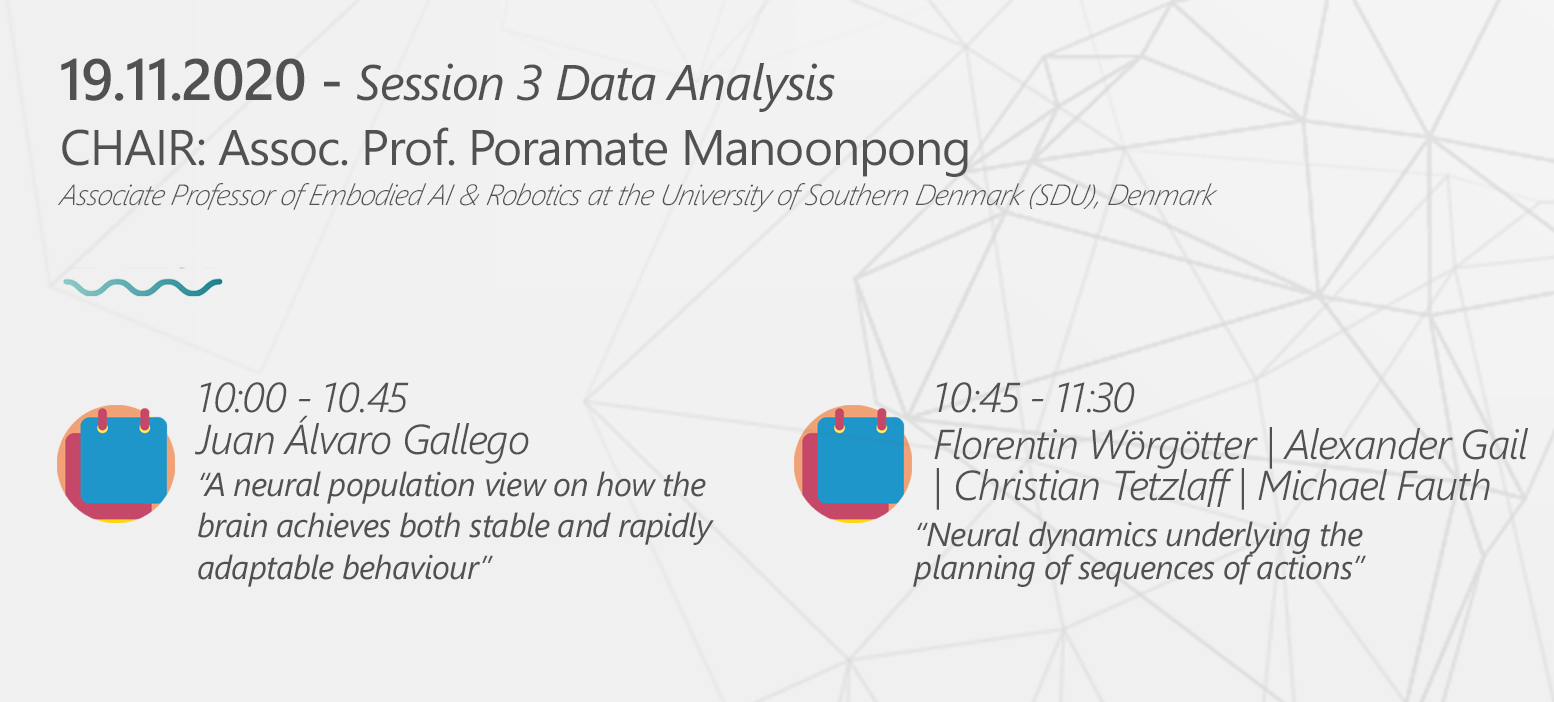
Session 3 - Details

A neural population view on how the brain achieves both stable and rapidly adaptable behaviour
Juan Álvaro Gallego
The analysis of neural population activity in several brain cortices has consistently uncovered low-dimensional subspaces that capture a significant fraction of neural variability. These “neural manifolds” are spanned by specific patterns of correlated neural activity, whose activation are often called “latent dynamics”. I will discuss a model of brain function in which these latent dynamics, rather than the independent modulation of single neurons, drive behaviour.Animals readily execute learnt behaviours in a consistent manner. How does the brain achieve this stable control? We recorded from neural populations in premotor, primary motor, and somatosensory cortices for up to two years as monkeys performed the same task. Remarkably, despite the unavoidable changes in recorded neurons, the population latent dynamics remain stable. Such stability allows reliable decoding of behavioural features for the entire timespan, while fixed decoders based on the recorded neural activity degrade substantially.
Perhaps the other most notable feature about animal behaviour is that we can adapt our movements very rapidly, even after a single error. When monkeys need to learn to counteract a velocity-dependent force field, the activity of single motor and premotor cortical neurons changes in complex ways; such changes puzzled neuroscientists for many years. I will show that adopting a “population view” reveals that despite these changes in single neuron activity, the neural manifold remains stable. Interestingly, motor adaptation is paralleled by the formation of new motor plans that are associated with novel latent dynamics. These observations indicate that rapid learning needs not be associated to fast synaptic changes.
A population view of how the brain works allows revealing both robust and rapidly changing patterns of neural activity that mediate behaviour. Given that neural manifolds are found throughout the brain, from prefrontal to visual cortex and even hippocampus, similar principles may apply to non-motor functions.